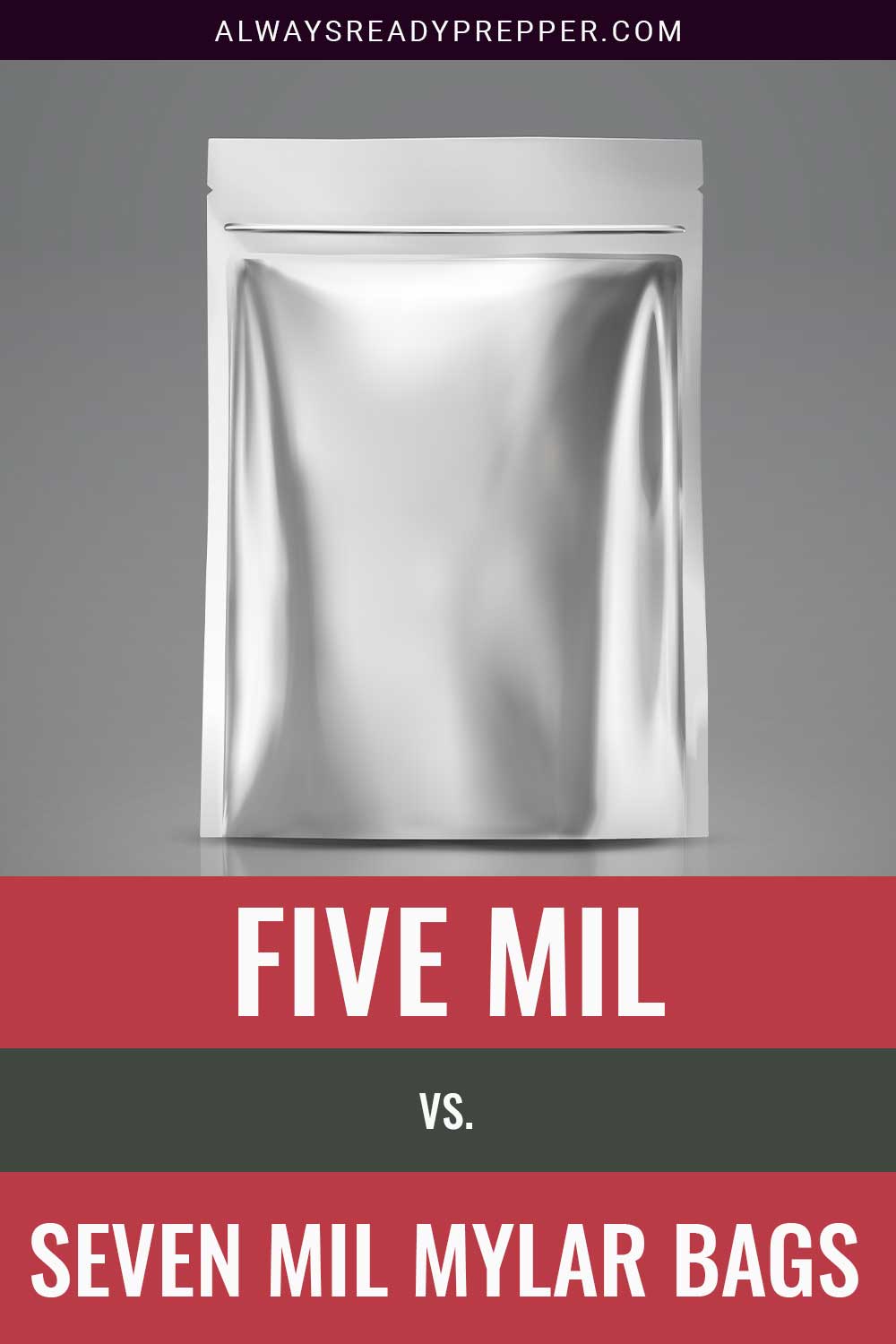Five Mil vs. Seven Mil Mylar bags
We may earn commissions for purchases made through links on our site. Learn more on our about us page.
For those that are not privy to what a Mil is, it is a thousandth of an inch or twenty-five-point-four micrometers and is used to measure the thickness of thinner materials, such as foils and mylar.
These micro-size differences might not seem much on the surface but will provide additional protection, especially from the sun and UV damage.
These protections are lost when the materials are thinner than four-point-five mils, which puts five miles on the edge of sufficient sunlight shielding capabilities and will make the thinner bag better for snacking foods and not storing dry goods.

What are the Similarities?
Both of these Mylar thicknesses will provide protection from sunlight damage, long-term dry goods storage solutions, and puncture-resistant material. In addition, each of these assortments of bags will be designed to keep the product inside fresh and usable.
Mylar is a lightweight material that has incredible insulation properties that even agencies like NASA use for insulation and as space blankets.
However, when it comes to the five mil and seven mil sizes of Mylar bags, you will find larger-sized bags geared towards larger quantities of dry goods and foods, like beans or rice.
What are the Differences?
There are not going to be many in the way of differences between these two thicknesses besides the two mils of material needed to produce.
The price to produce these two bags will be enough of a difference to be a cost-efficiency equation for businesses. Mass production of the five mils will be cheaper to manufacture.
Think about the seven mils like a sack from the days of old, a sack of grain can now be contained in a seven mils thick Mylar bag, then last dozens of years in storage.
When it comes to home usage, a limited seven mils for rice, beans, and other large quantities will make sense for the budget, but it would be more likely to find five mils.
Pros & Cons: Five Mils and Seven Mils
The pros of having the seven mils sized Mylar bags will be the top-in-class long-term storage for dry goods. These bags are that good, and the con will be that these benefits remain a dry storage asset. When placed in colder environments like the freezer, the Mylar bag struggles.
The five mils size will be within a half to whole mils of being too thin to provide adequate UV protection for the products inside, and the pro will be that this sized Mylar bag will have more options for customers when it comes to shapes and measurement options.
Which Ones are Easier to Maintain?
Both of these materials will be some of the easiest items to take care of. Mostly, these mylar bags are nearly indestructible if you keep them out of the freezer or any similar environments.
Each will require, for long-term storage upwards of fifty-plus years, a room that is kept around seventy degrees Fahrenheit and dry, out of the weather.
Naturally, if you must use these bags for something other than food storage, either can hold up to your outdoor adventure needs, with the seven mils thick bag having the advantage when it comes to sunlight and UV ray protection.
Which One Lasts Longer?
Each of these Mylar bags will be designed to last for upwards and longer than fifty years, which in perfect condition makes them both equal in this aspect.
On the other hand, when it comes to durability under pressure and extreme stress, the extra two mills of material will make a big difference, especially when considering puncture tests.
Therefore, when looking for something to break the stalemate, it had to come down to an extreme conditions test in which the seven mil bags came out on top. Otherwise, there will be little to no maintenance required for either of these Mylar products.
Final Thoughts on Five Mil vs. Seven Mil Mylar Bags
Mylar bags are one of the newer innovations that have come out that instantly changed the market. The material was used by NASA for space environment needs and now has become the best option in food storage.
When it comes to the thickness of the material, be sure to think about what your requirements are. Think seven mils or thicker if you need to keep food for years. If you are backpacking or packing lunches, go thinner than five miles.
The sizes between five and seven will be where companies can cut costs or ensure product security. Otherwise, all else will not need to be concerned with these size formats.



Leave a Reply
You must be logged in to post a comment.